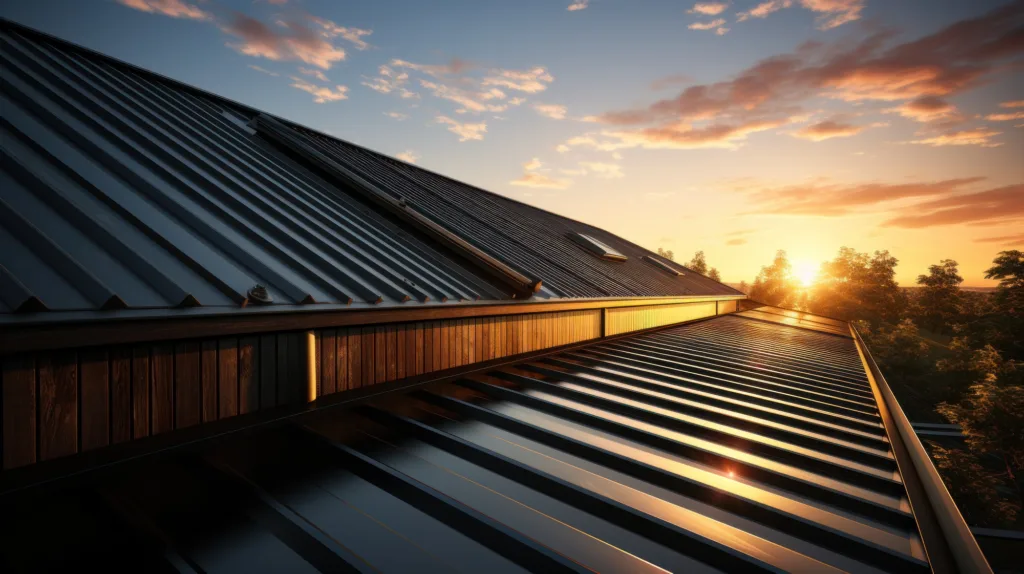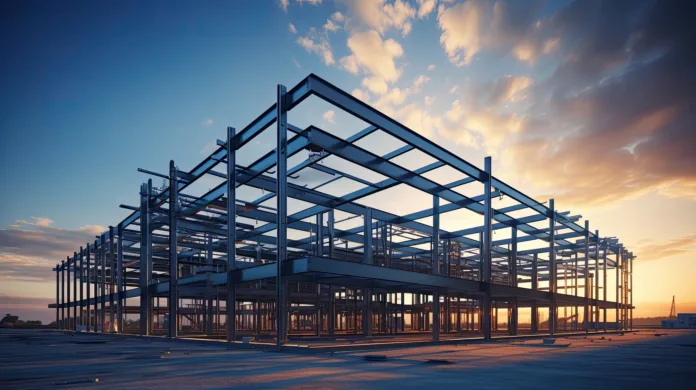In large-scale construction projects, selecting the right roofing material is a critical decision that can significantly impact the structural integrity, durability, and long-term performance of a building. Metal roofing has emerged as a popular choice due to its exceptional strength, versatility, and ability to withstand harsh environmental conditions.
This article explores the structural benefits of metal roofing for major construction projects, highlighting its advantages over traditional materials.
- Lightweight Yet Robust Construction
One of the primary advantages of metal roofing is its lightweight yet robust construction. Unlike heavy materials like concrete or clay tiles, metal roofing systems are lightweight, reducing the overall load on the building’s structure. This also simplifies the installation process. Contractors can handle and maneuver the materials with greater ease, minimizing the need for heavy machinery and resulting in a smoother, more efficient installation process.
Furthermore, the robust construction of this roofing option ensures that it can withstand the rigors of large-scale construction sites, where heavy equipment and ongoing activity can pose challenges for more fragile roofing materials.
The combination of lightweight and robust construction also allows for greater flexibility in the overall design of large-scale structures. Architects and engineers can explore innovative designs without being constrained by the limitations of heavier roofing materials, ultimately leading to more creative and visually appealing structures.

- Superior Tensile Strength
The superior tensile strength of metal roofing materials, such as steel or aluminum, not only protects against extreme weather conditions but also guarantees long-lasting durability. Unlike other materials that may deteriorate over time due to exposure to the elements, metal roofing retains its structural integrity, minimizing the need for costly repairs or replacements.
Moreover, the tensile strength of metal roofing allows for larger panel sizes, reducing the number of seams and fasteners required. This feature can further enhance the overall structural integrity of Madison WI metal roofing systems, minimizing potential weak points and increasing the resistance to wind uplift forces.
- Resistance To Fire and Extreme Temperatures
The fire resistance of metal roofing materials can be attributed to their non-combustible nature, making them an excellent choice for large-scale construction projects where fire safety is a top priority. This characteristic can potentially reduce insurance costs and meet stringent building codes, providing peace of mind for both builders and occupants.
In addition to fire resistance, the ability of metal roofing to withstand extreme temperatures without warping or deterioration can lead to significant energy savings. The reflective properties of some metal roofing materials can help reduce cooling costs by reflecting a substantial portion of the sun’s radiant heat, leading to a more energy-efficient building overall.
- Seismic and Impact Resistance
The flexibility and strength of metal roofing systems make them well-suited to withstand seismic activity and impact forces. During an earthquake, the metal panels can flex and absorb the energy of the seismic waves, reducing the risk of structural damage to the building. This characteristic is particularly valuable in regions prone to seismic activity, where the safety and integrity of large-scale structures are of utmost importance.
Furthermore, the impact resistance of metal roofing can protect against damage from falling debris or hail, ensuring the continued functionality of the building even in the aftermath of severe storms or other natural disasters.
- Increased Roof Span Capabilities
The ability of metal roofing to span larger distances without excessive support structures offers several advantages in large-scale construction projects. Not only does it reduce the need for additional framing and support beams, but it also creates opportunities for more open and flexible interior spaces, allowing for greater versatility in the design and layout of the building.
Additionally, the increased roof span capabilities of metal roofing can simplify the construction process by reducing the number of required structural components, potentially leading to faster construction timelines and lower overall costs.
- Ease Of Installation and Maintenance
The ease of installation and minimal maintenance requirements of metal roofing systems can significantly contribute to cost savings and operational efficiency in large-scale construction projects. The interlocking or overlapping design of many metal roofing panels allows for a streamlined installation process, reducing labor costs and minimizing potential errors or delays.
Furthermore, the minimal maintenance required for metal roofing can lead to substantial long-term cost savings. Unlike other materials that may require frequent repairs or replacements, metal roofs can maintain their integrity and performance for decades with minimal upkeep, reducing the overall lifecycle costs of the building.
- Environmental Sustainability
In addition to being highly durable and recyclable, metal roofing systems can contribute to the environmental sustainability of large-scale construction projects in several ways. Many metal roofing manufacturers now offer products with high recycled content, further reducing the environmental impact associated with raw material extraction and processing.
Moreover, the energy efficiency benefits of metal roofing, such as reflective coatings that reduce cooling costs, can lead to significant reductions in a building’s overall energy consumption and carbon footprint over its lifetime.
- Compatibility With Modern Building Designs
The versatility of metal roofing systems allows architects and engineers to push the boundaries of modern architectural design. The ability to customize metal roofing panels to fit unique shapes, curves, and angles opens up a world of creative possibilities, enabling the creation of visually striking and structurally sound structures that stand out from traditional designs.
Furthermore, the compatibility of metal roofing with innovative building techniques, such as prefabrication and modular construction, can streamline the construction process and facilitate the integration of advanced building technologies into large-scale projects.
Parting Words
Metal roofing systems present significant benefits for extensive construction projects, blending robustness with efficiency. The combined attributes of lightness, superior strength, and resistance to various environmental threats contribute to a roofing solution that promises both safety and longevity. These features, along with their ease of maintenance and positive environmental impact, make metal roofing a compelling choice for modern construction needs.
By adopting this type of roofing, stakeholders in the construction sector can ensure that their projects are structurally sound, economically viable, and environmentally responsible. Careful evaluation of these structural benefits allows for informed decision-making, leading to buildings that stand the test of time while reflecting contemporary standards of efficiency and sustainability.

